AMD Drivers Not Installing Windows 11 - 9 Effective Fixes
5 min. read
Updated on
Read our disclosure page to find out how can you help MSPoweruser sustain the editorial team Read more
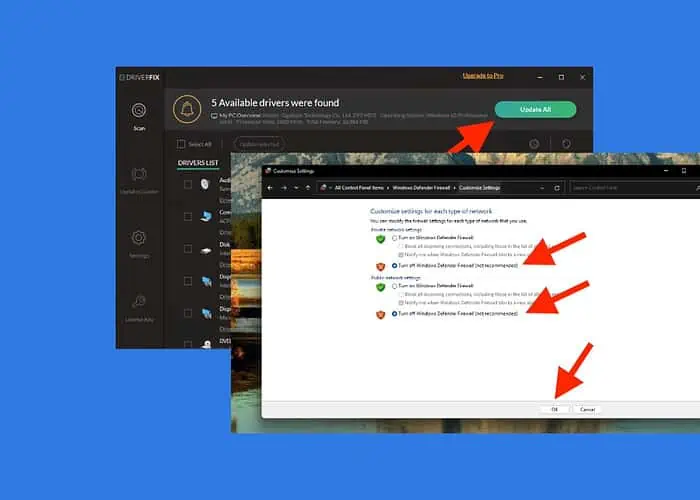
Are AMD drivers not installing on your Windows 11 PC properly? If so, you’re not alone!
More often than not, AMD drivers don’t work because you don’t have the right version. In such a case, updating or reinstalling the driver does the trick. You can also try updating your Windows to the latest version to fix any incompatibility issues.
That said, in this guide, I’ll walk you through the most effective ways to fix this issue.
Fix: AMD Drivers Not Installing on Windows 11
1. Update or Reinstall the Driver via Device Manager
- Press Win + S to open the Search box and type “Device Manager.”
- Select Device Manager from the menu.
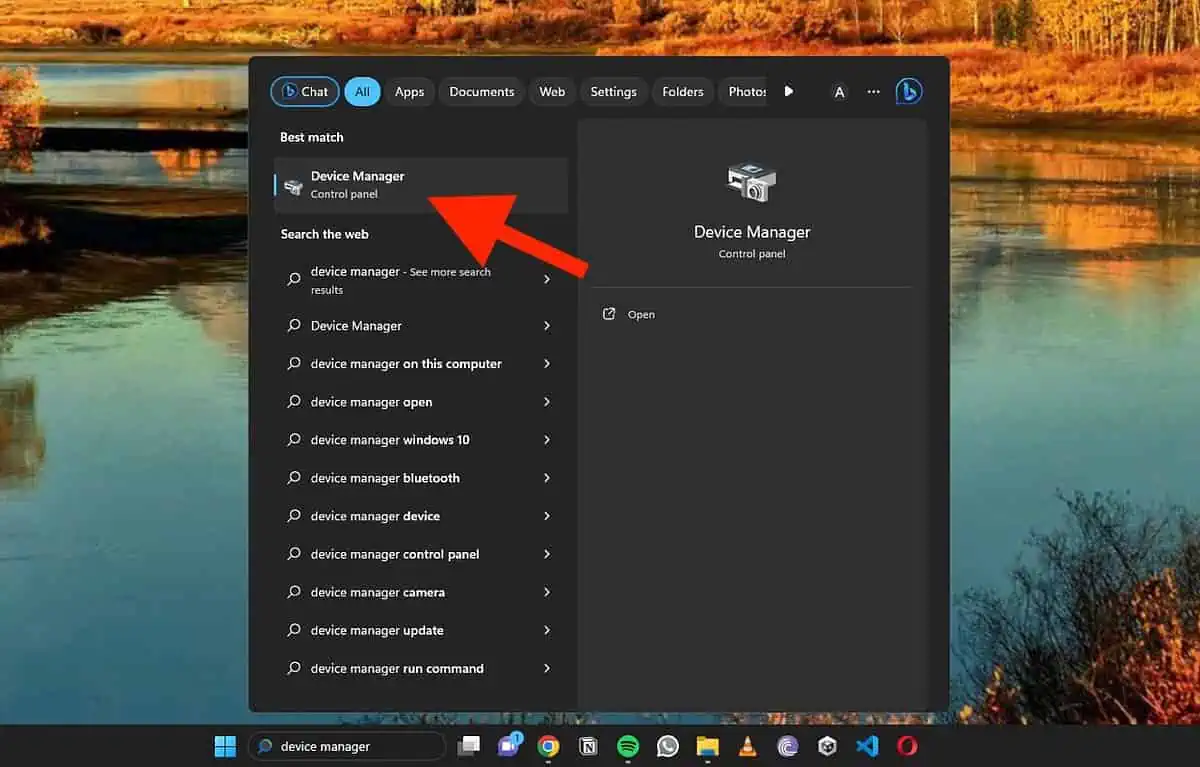
- Next, find the Display adapters category, right-click the AMD graphics card driver, and choose Properties.
- Go to the Driver tab and click on Update Driver.
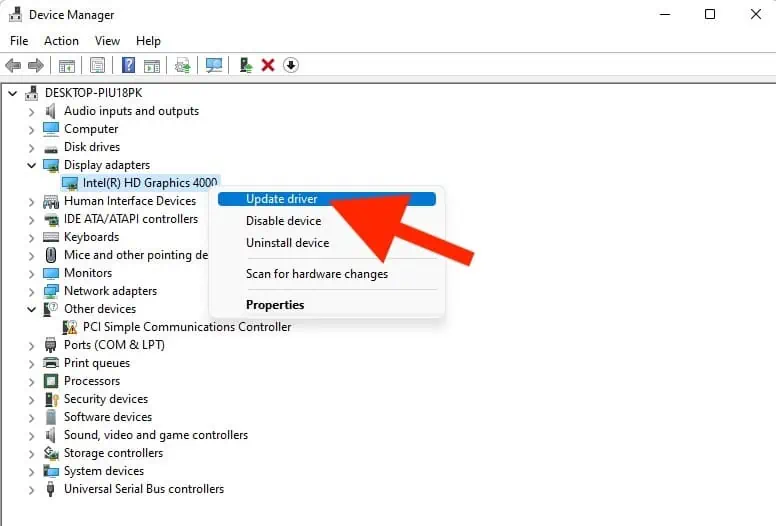
- Choose the “Search automatically for drivers” option. Windows will find and install the best drivers for your system. Restart your computer to see if the AMD driver issues in Windows 11 are resolved.
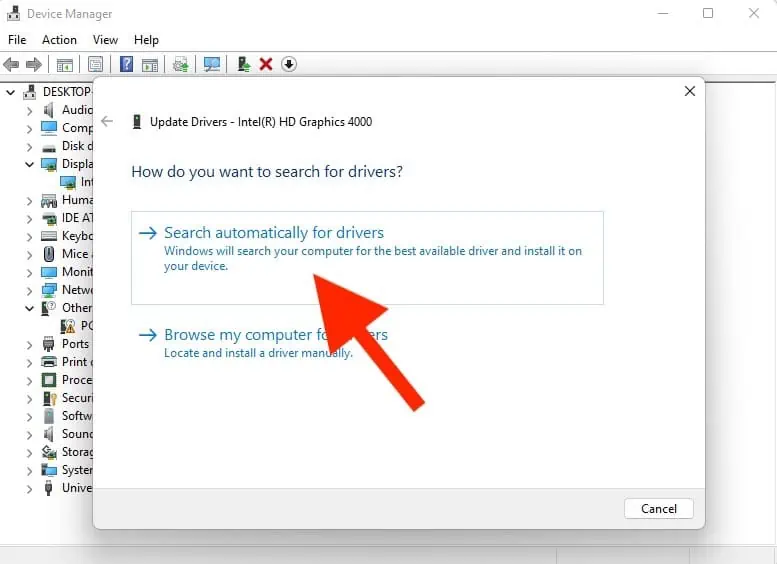
If the problem carries on, you can uninstall the AMD driver by selecting “Uninstall Device” in the Properties window. Click Uninstall to confirm the action and then restart your computer. Windows will automatically reinstall the default AMD driver.
2. Use DriverFix to Install the Right Driver
You can also fix the AMD driver installation issue on Windows 11 through a third-party driver updater tool like DriverFix.
DriverFix works by scanning the system, identifying outdated or missing drivers, and updating them in one click.
- Visit the DriverFix website and click Download.

- Extract the files.
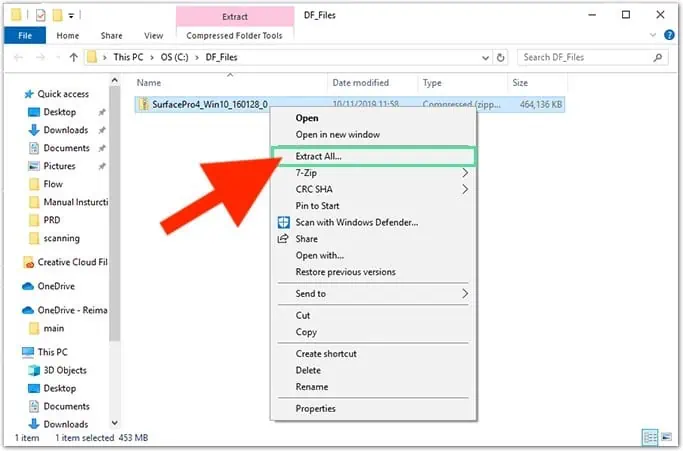
- Run the installation wizard, open DriverFix, and select “Update All” to update any outdated AMD drivers.
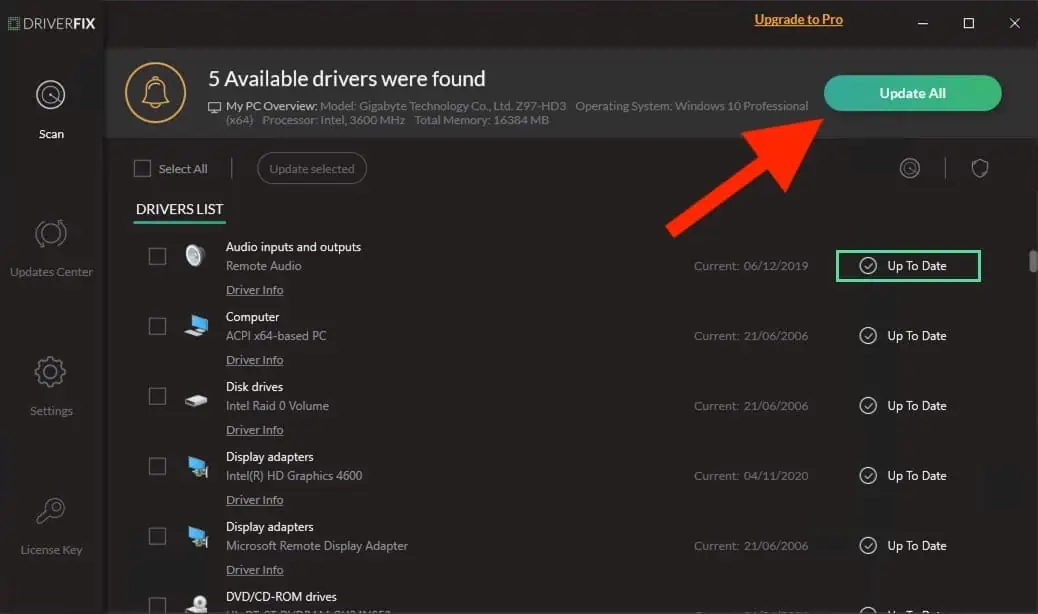
- That’s it! DriverFix will automatically find the most suitable AMD driver for your system and install it on your PC.
3. Install the Driver in Compatibility Mode
Compatibility mode ensures your drivers and system work seamlessly:
- Right-click on AMD Drivers and choose “Show more options.”
- Select “Troubleshoot compatibility.”
- In the Program Compatibility Troubleshooter, click “Try recommended settings.”
- Click “Test the program.”
- Follow the instructions on the installation wizard to complete the process.
4. Update Windows
A lot of times, AMD drivers aren’t installing due to a compatibility issue with your Windows version.
- Click the Start icon and select Settings.
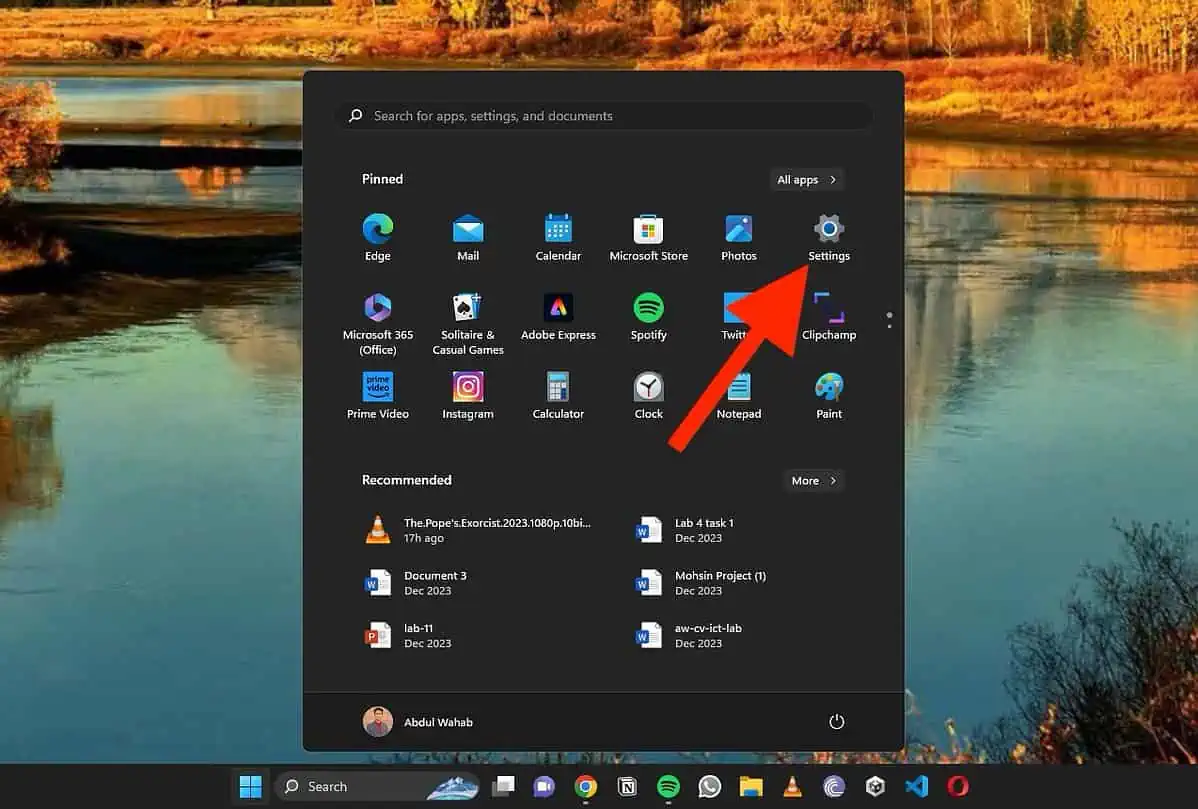
- Select Windows Update from the left sidebar.

- Click Check for Updates and wait for it to complete the search.
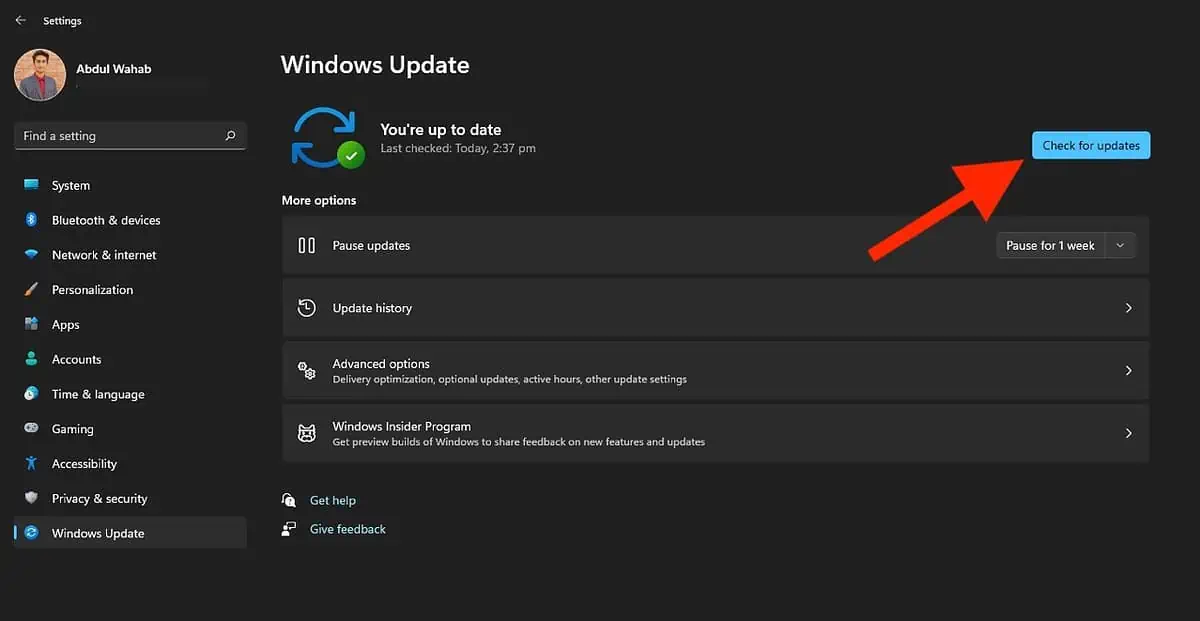
- If any updates are available, click Install.
- Once your PC is up-to-date, try re-installing the AMD drivers – they should work fine now.
5. Roll Back the Driver to a Previous Version
Sometimes, the latest version of a driver is incompatible with your PC, so reverting it to the previous one is the way to go.
- Open Device Manager on your PC.

- Double-click the Display adapters option to expand it.

- Right-click on the driver name and click Properties.
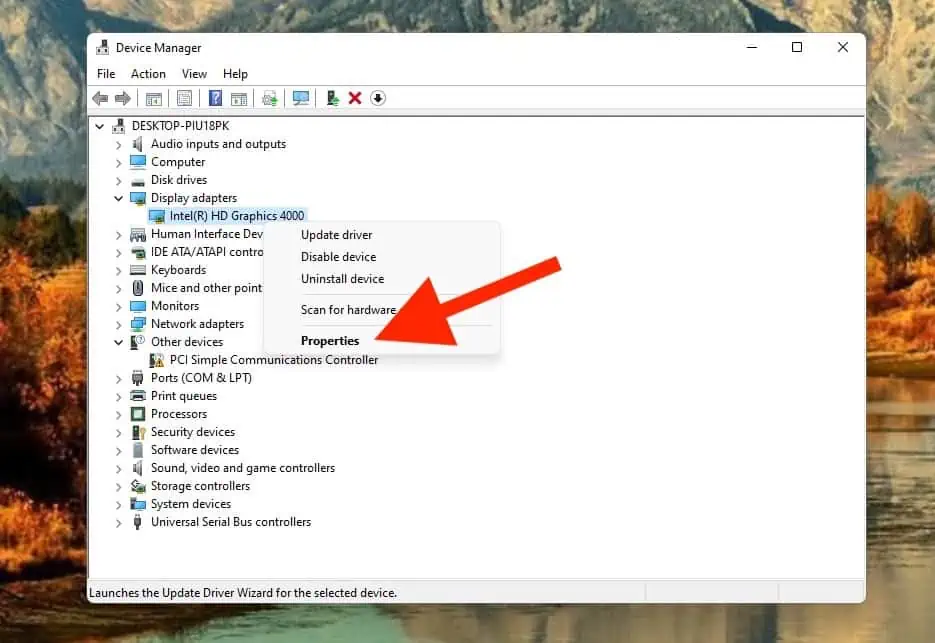
- Select the Roll Back Driver option (unless greyed out) to revert the driver to its previous version.
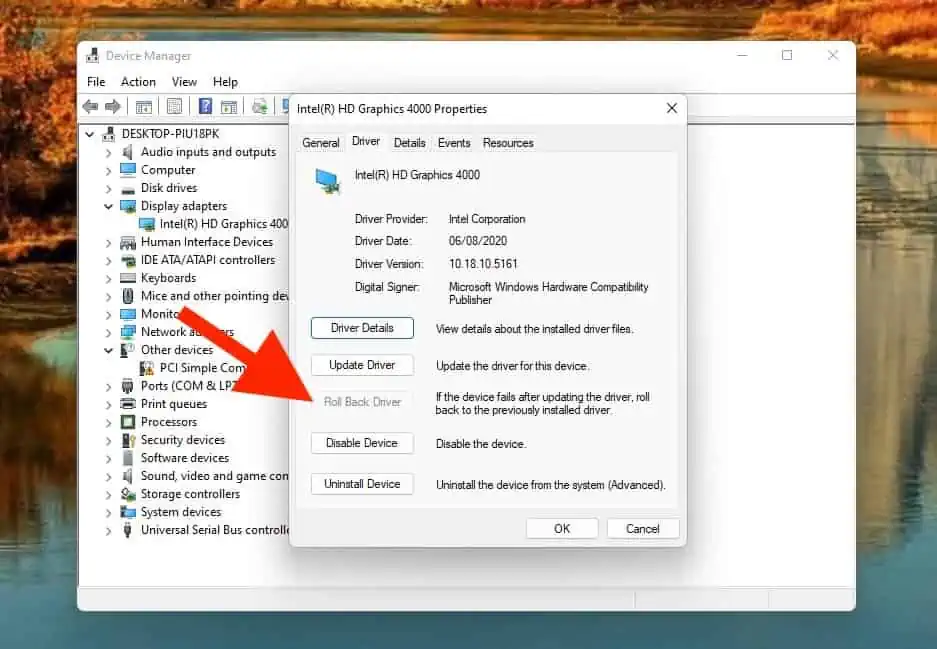
6. Run an SFC and DISM Scan
System File Checker (SFC) and Deployment Image Servicing and Management (DISM) programs are great tools for keeping your Windows system healthy.
SFC is inherent in all current Windows versions and specializes in rectifying corrupted system files. Meanwhile, DISM is employed to service Windows images and troubleshoot issues.
To run an SFC scan:
- Click on Start and type CMD.
- Right-click on Command Prompt and select Run as Administrator.

- Input “sfc /scannow” into the command prompt window.
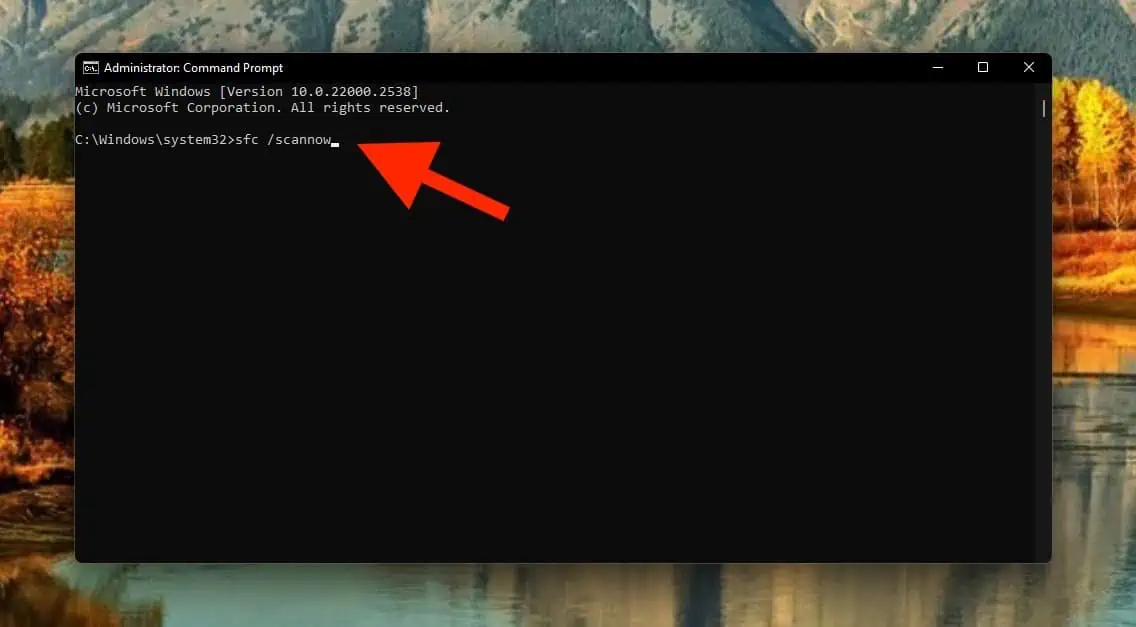
For DISM, here are the steps to follow:
- After SFC, enter the following command: “Dism /Online /Cleanup-Image /RestoreHealth.”

- The scan can take some time, and any identified problems will be repaired.
7. Clean Your GPU
You might have dust on the GPU fan. In such a case, cleaning your graphics card does the trick and the driver starts working fine.
To clean your GPU, completely turn off your computer and unplug the power cable and peripherals. Next, open your computer case and remove the graphics card. Now, clean the graphics card using a handkerchief or a soft brush. Once done, plug the graphics card back in.
8. Change the TdrDelay Value in the Registry Editor
Sometimes, the Windows 11 AMD driver crashes are caused by the TdrDelay registry value.
- Open the Run window and enter “regedit,” then click OK to launch the Registry Editor.
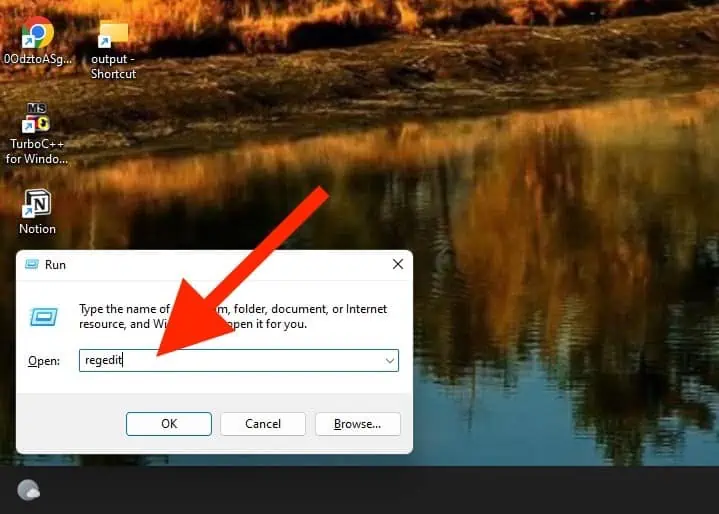
- Enter the following path in the Registry Editor:
HKEY_LOCAL_MACHINE/System/CurrentControlSet/Control/GraphicsDrivers
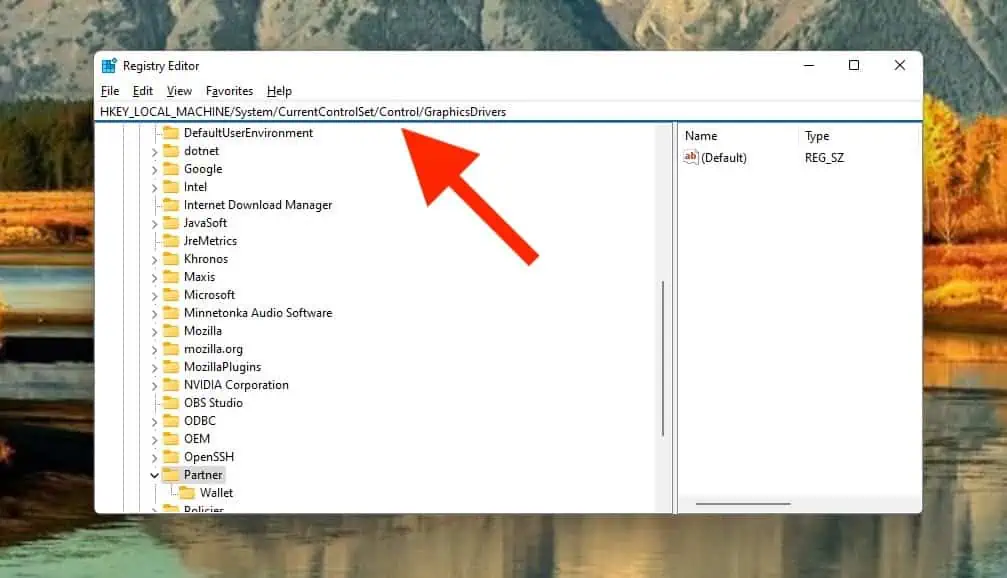
- Once at the GraphicsDrivers folder, right-click in the right pane, select New > QWORD (64-bit) Value.
- Rename the newly created value to TdrDelay and double-click it.
- Set the Value data to 8 with the Base option set to Hexadecimal.
- Click OK to save the changes and exit the Registry Editor.
Once you’re done with these steps, reboot your PC to check if the AMD driver crashing issue persists.
9. Disable Windows Defender Firewall
Windows Defender Firewall is designed to safeguard your Windows OS by actively searching for malware and suspicious activities. However, these protective measures can negatively impact the performance of other drivers.
- Click Search bar, type in “Windows Defender Firewall” and select the corresponding result.

- Click on “Turn Windows Defender Firewall on or off.”
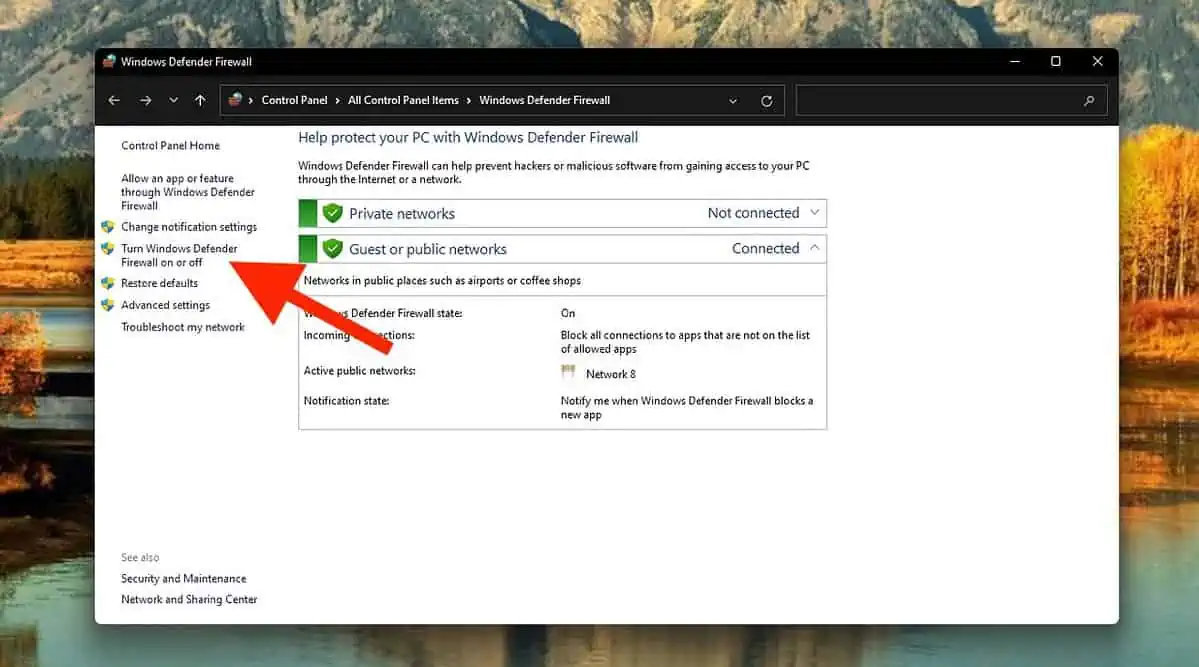
- In the Private network settings, choose “Disable Windows Defender Firewall (Not recommended).”
- Repeat the process for Public network settings.
- Click OK to save the changes.
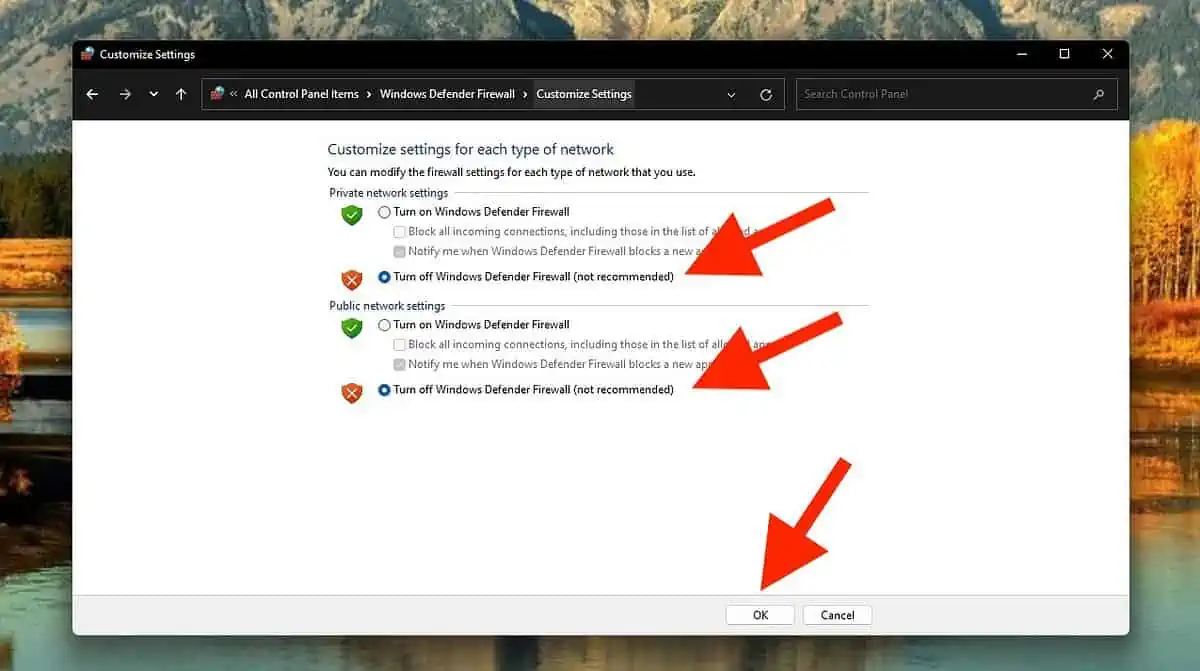
If the problem persists, and you have a third-party antivirus suite installed, temporarily disable the antivirus too.
Right-click on the antivirus icon in the System tray on the Taskbar and select Disable. Alternatively, you can uninstall the antivirus temporarily.
You may also be interested in:
So, now you know how to fix AMD drivers not installing on Windows 11. Some quick solutions include updating or reinstalling the driver, installing it in compatibility mode, and updating Windows.
Which fix are you going to try first? Let me know!

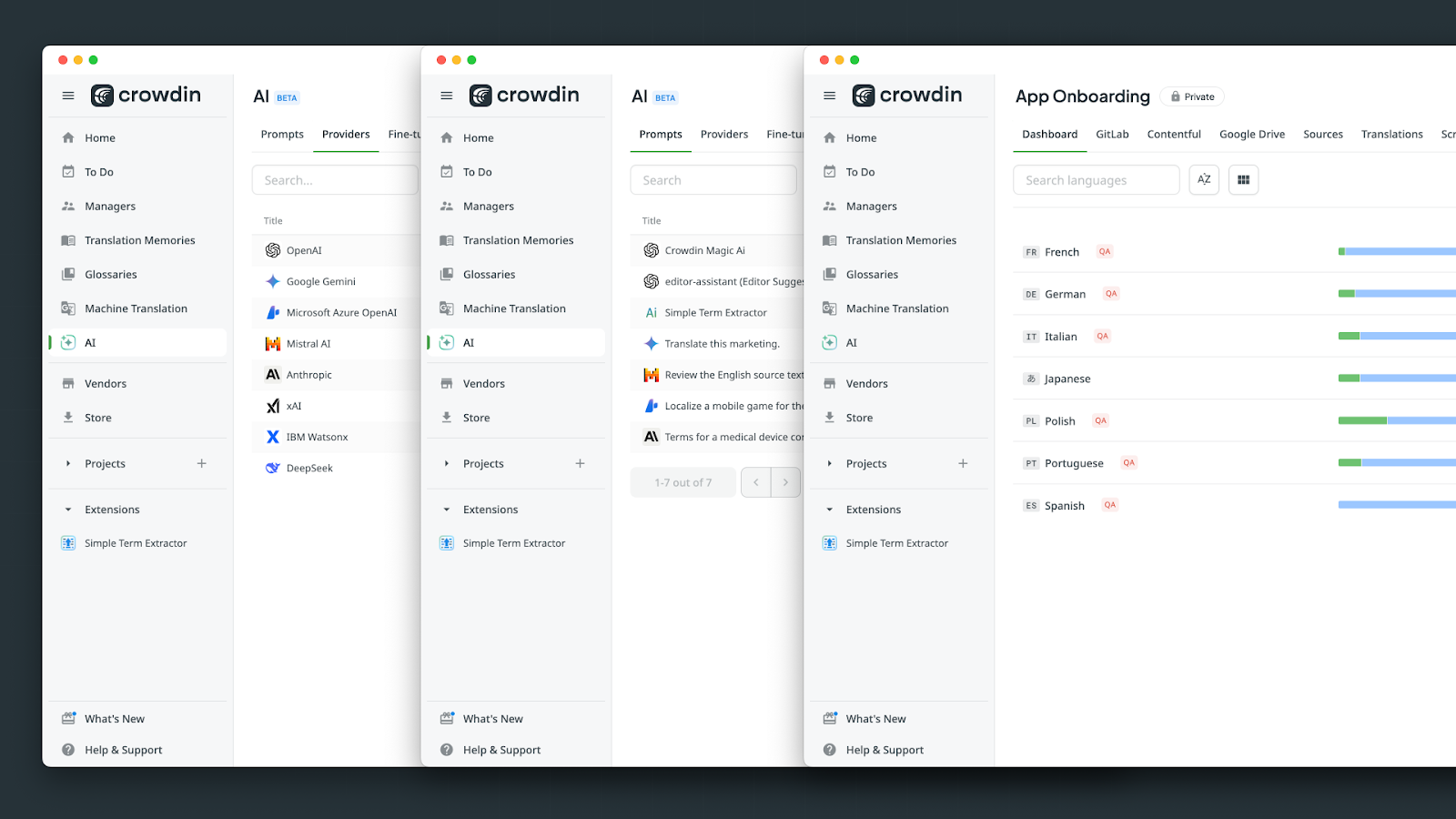
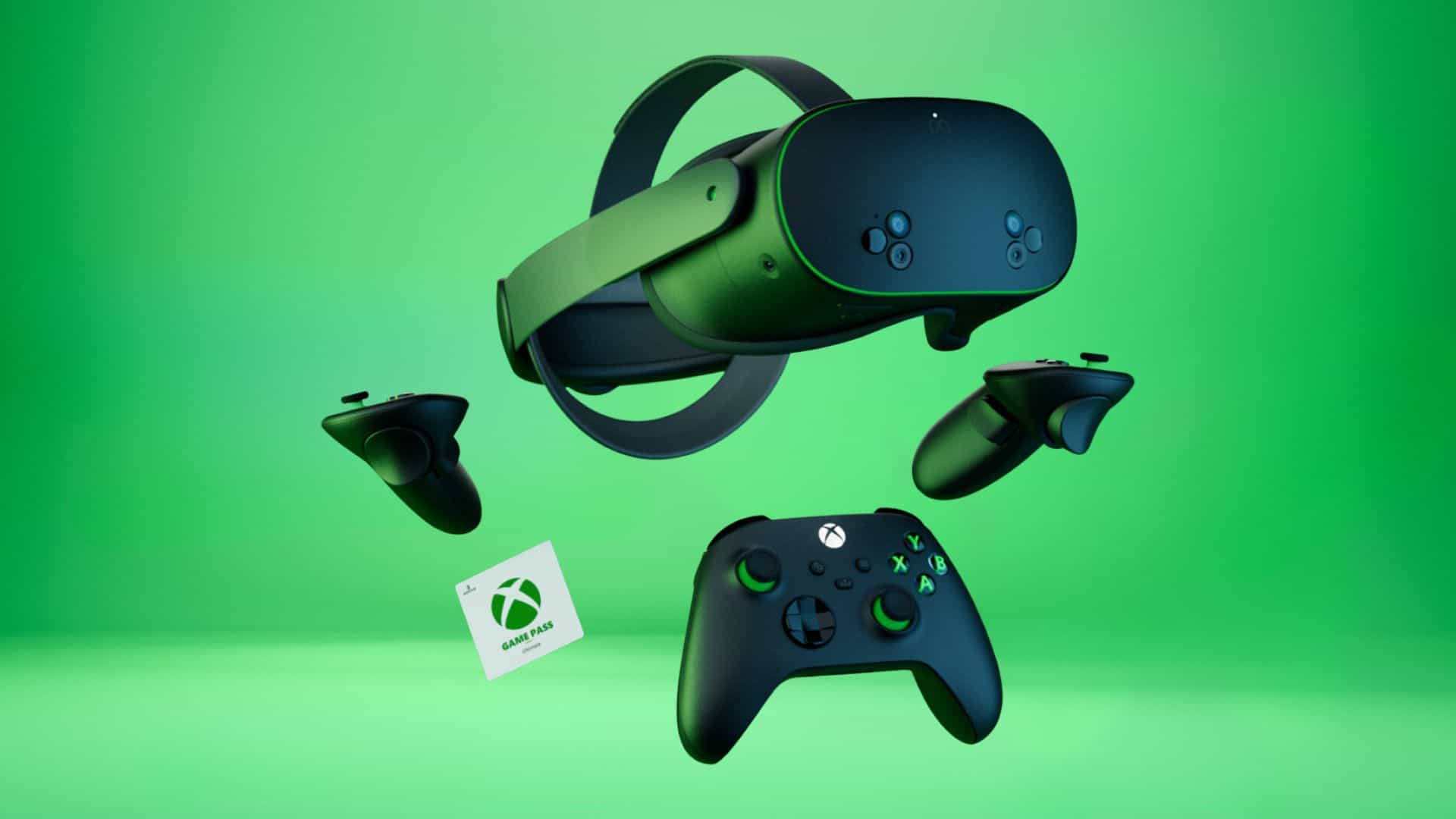






User forum
0 messages